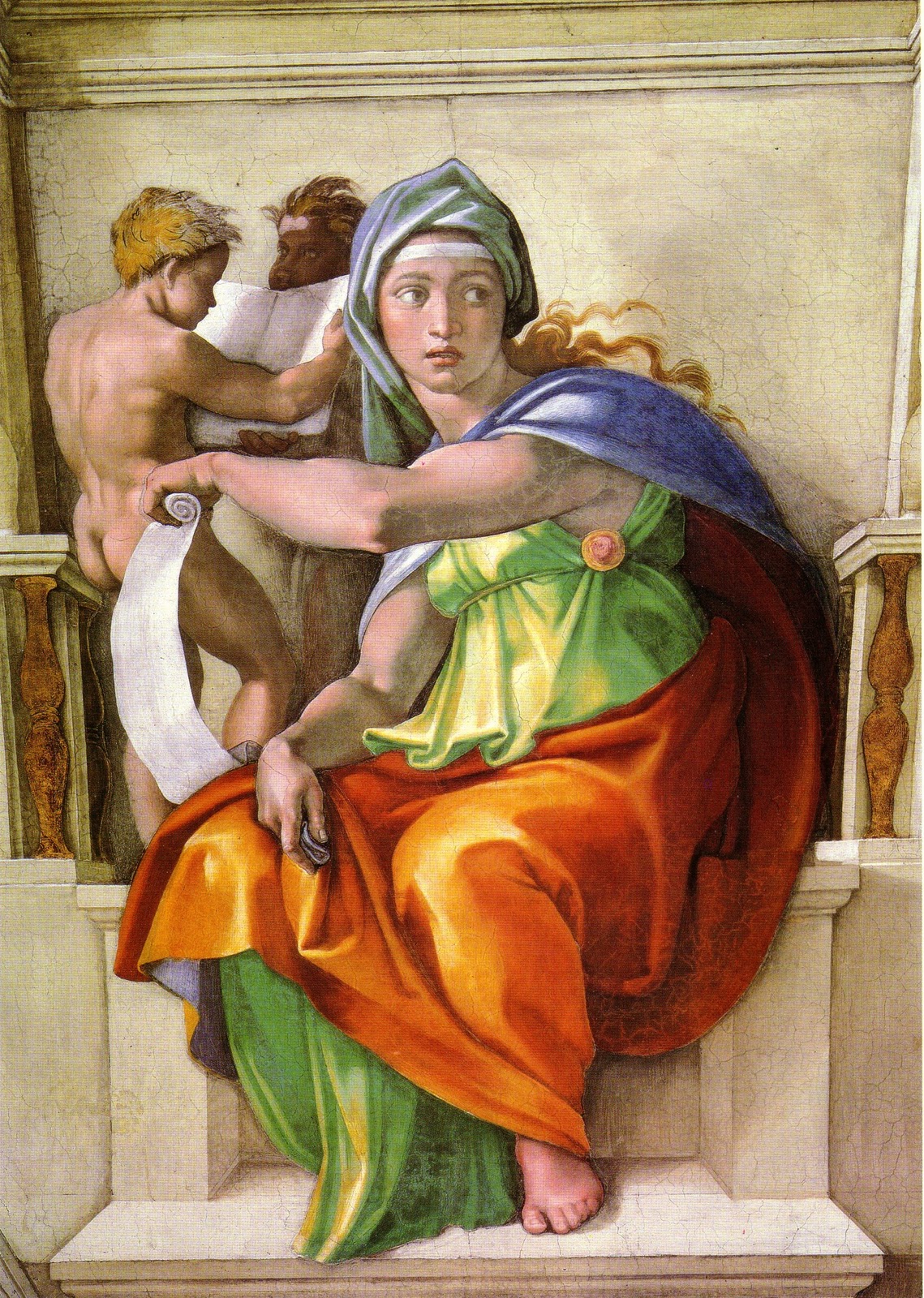I don't know all the stories or people depicted on the ceiling, but I'm learning, and here's what I've got so far. Michelangelo was called to Rome in 1508, commissioned to paint the Sistine Chapel by the pope. Some of the lower portions had already been painted by other various artists. The subject itself is not only an evolution, the art is as well. Michelangelo tells the story of Genesis backwards, beginning with the Drunkenness of Noah. The final scene, God making light in the darkness, is located over the altar. Phophets, Sibyls, and ancestors of Christ line the walls. Michelangelo produced hundreds of preliminary drawings and then set to work on scaffolding, standing with his head leaning back, not laying down as some believed. After Michelangelo had finished the first section, he stepped down from the scaffolding to view his work from the ground. After that look, he immediately began to increase the scale of his figures. This happens twice. The scale of the God in the Separation of Light From Darkness is massive compared to the scale of Noah in the Drunkenness.
Of all the Genesis paintings, the most well-known is the Creation of Adam. God's full strength shows through his tunic. Michelangelo's precise hand marks every vein and wrinkle on God's body, marking his power as he calmly looks down to Adam. Adam looks longingly to God. Their hands nearly touch as they reach out to one another. The electricity between the two figures as God pours his love into Adam pulses through their hands, and the weight of the world is held in that moment of reaching.
There are a few other figures that I find very beautiful. Michelangelo is known for making figures that encapsulate beauty and power through their massive, muscular bodies. An example is the Libyan Sibyl, about to step down from her thone. Michelangelo used a male model for all of his figures, including the females, so the sibyls are extremely strong. The Libyan sibyl's back displays a powerful body, colorful and beautiful.
The same goes for the Delphic Sibyl. Look at her body, how beautiful she is, and the colors Michelangelo uses. Breathtaking. Sibyls, like prophets, understood how Old Testament events predicted the New Testament coming of Christ. They are the ancestors of Christ who understand humanity's spiritual destiny.
There are twenty nude youths seated around the Genesis stories that encapsulate beauty and power. They all pose and demonstrate beautiful proportions. I had to point out this one. I don't know who it is, but when you see him in person it's hard to look away.
Nothing but the real thing will do it justice. The Vatican truly is a remarkable place, and Michelangelo's Sistine Chapel is a wonder. I encourage everyone to go there if you ever get the opportunity.





